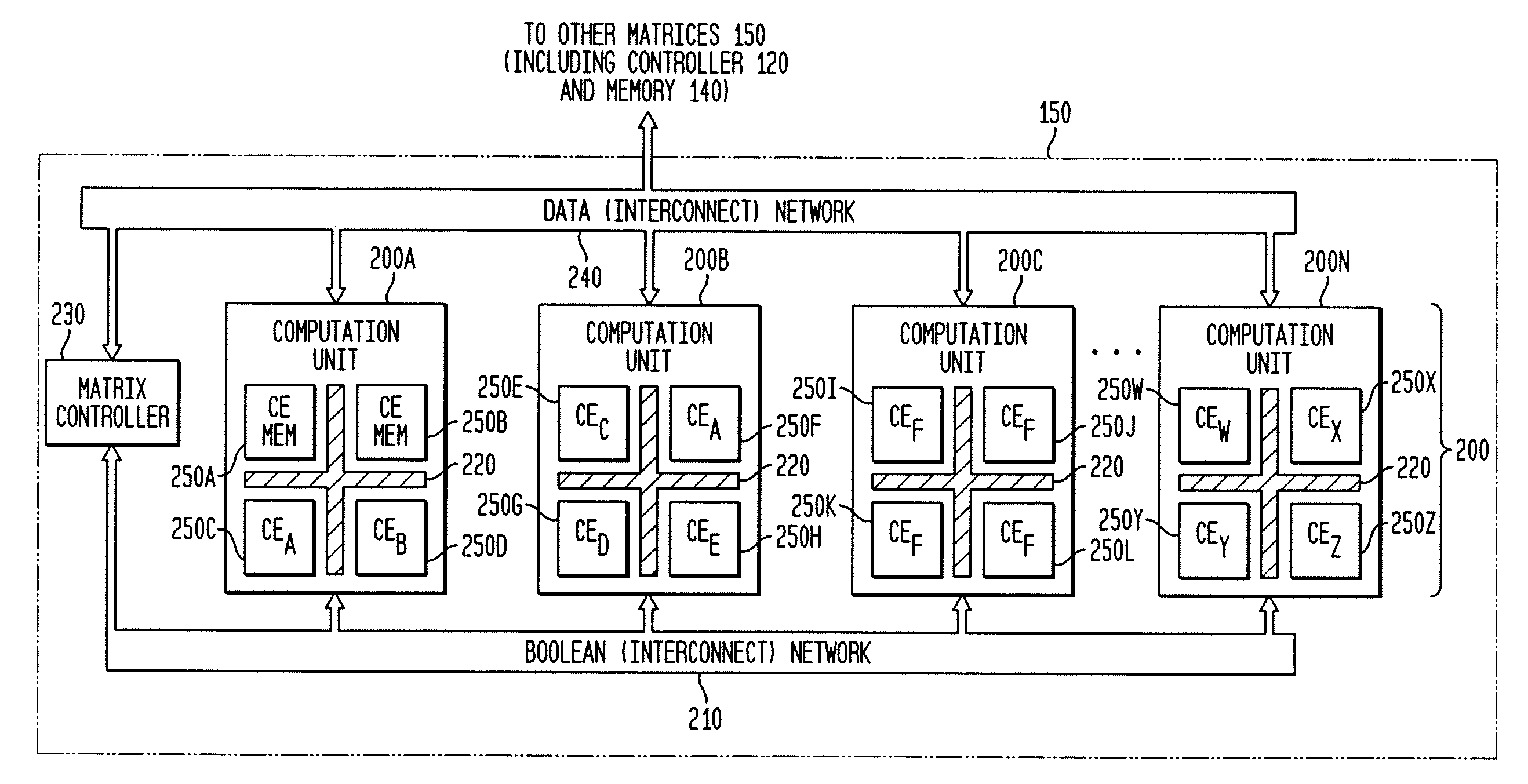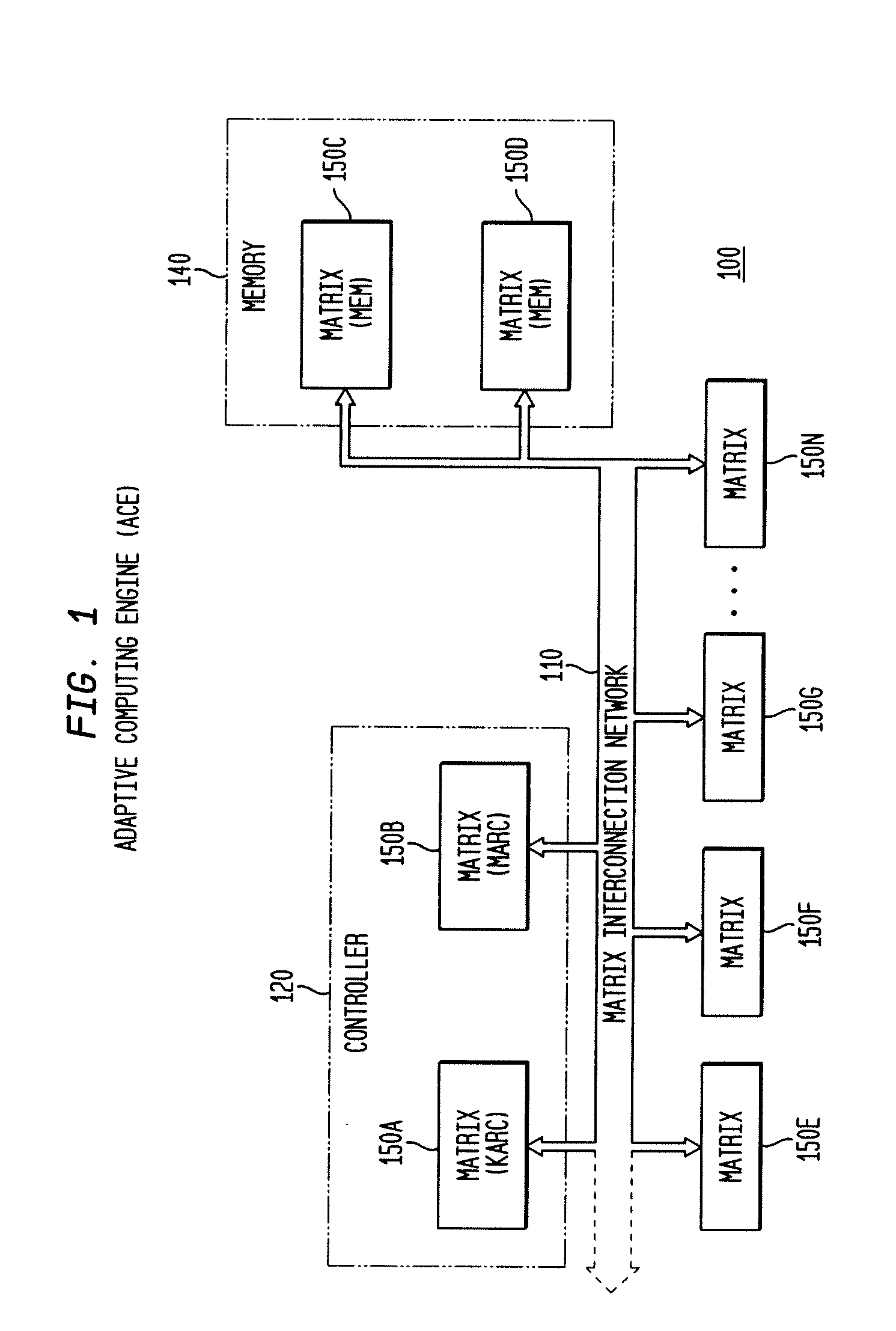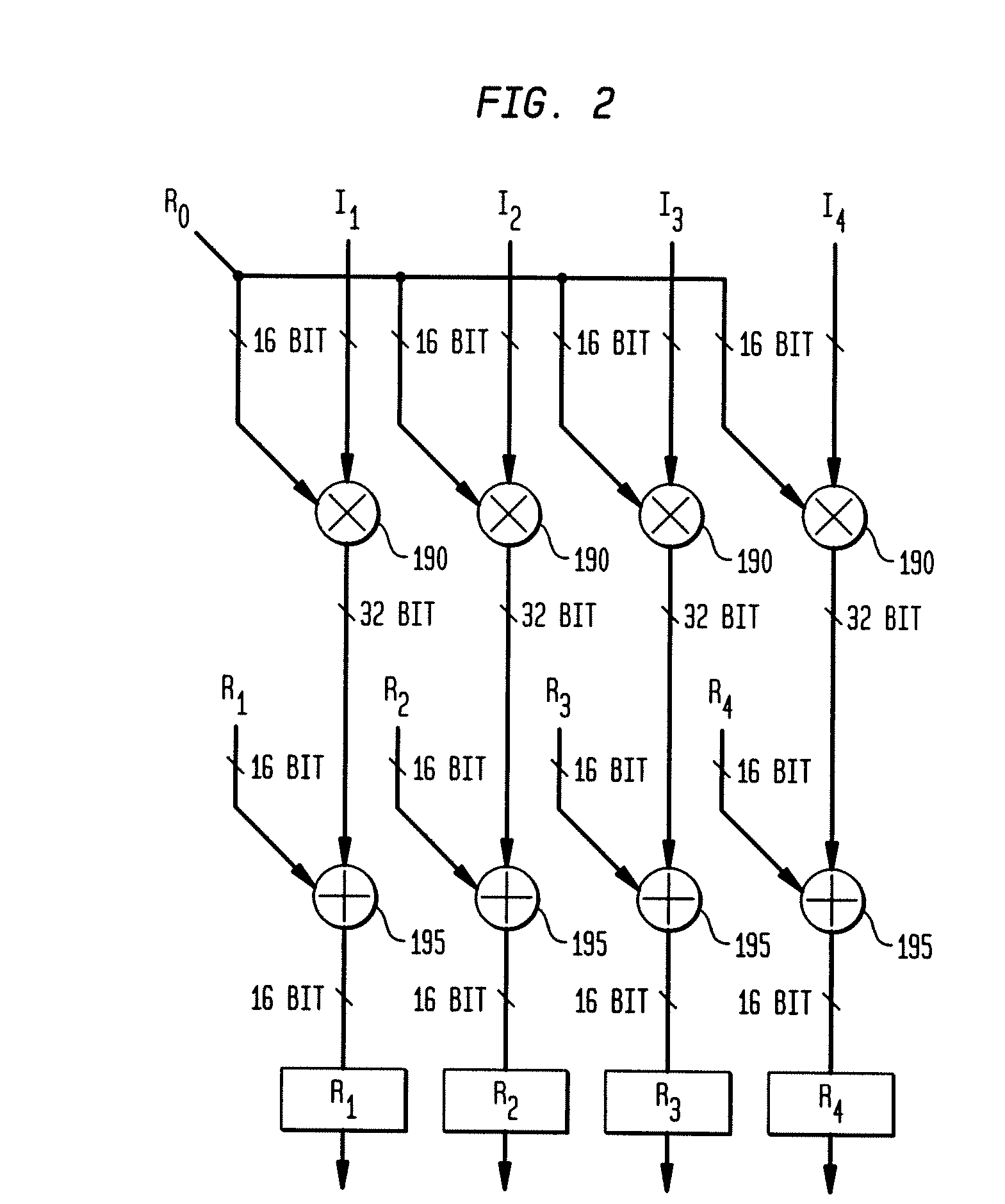Adaptive integrated circuitry with heterogeneous and reconfigurable matrices of diverse and adaptive computational units having fixed, application specific computational elements
a technology of adaptive integrated circuits and computational units, applied in the field of integrated circuits, can solve the problems of reducing the efficiency of actual algorithmic operations, and consuming significantly more power, so as to achieve the effect of minimizing potential disadvantages, and maximizing the various advantages of processors
- Summary
- Abstract
- Description
- Claims
- Application Information
AI Technical Summary
Benefits of technology
Problems solved by technology
Method used
Image
Examples
Embodiment Construction
[0025]While the present invention is susceptible of embodiment in many different forms, there are shown in the drawings and will be described herein in detail specific embodiments thereof, with the understanding that the present disclosure is to be considered as an exemplification of the principles of the invention and is not intended to limit the invention to the specific embodiments illustrated.
[0026]As indicated above, a need remains for a new form or type of integrated circuitry which effectively and efficiently combines and maximizes the various advantages of processors, ASICs and FPGAs, while minimizing potential disadvantages. In accordance with the present invention, such a new form or type of integrated circuit, referred to as an adaptive computing engine (ACE), is disclosed which provides the programming flexibility of a processor, the post-fabrication flexibility of FPGAs, and the high speed and high utilization factors of an ASIC. The ACE integrated circuitry of the pres...
PUM
 Login to View More
Login to View More Abstract
Description
Claims
Application Information
 Login to View More
Login to View More - R&D
- Intellectual Property
- Life Sciences
- Materials
- Tech Scout
- Unparalleled Data Quality
- Higher Quality Content
- 60% Fewer Hallucinations
Browse by: Latest US Patents, China's latest patents, Technical Efficacy Thesaurus, Application Domain, Technology Topic, Popular Technical Reports.
© 2025 PatSnap. All rights reserved.Legal|Privacy policy|Modern Slavery Act Transparency Statement|Sitemap|About US| Contact US: help@patsnap.com



